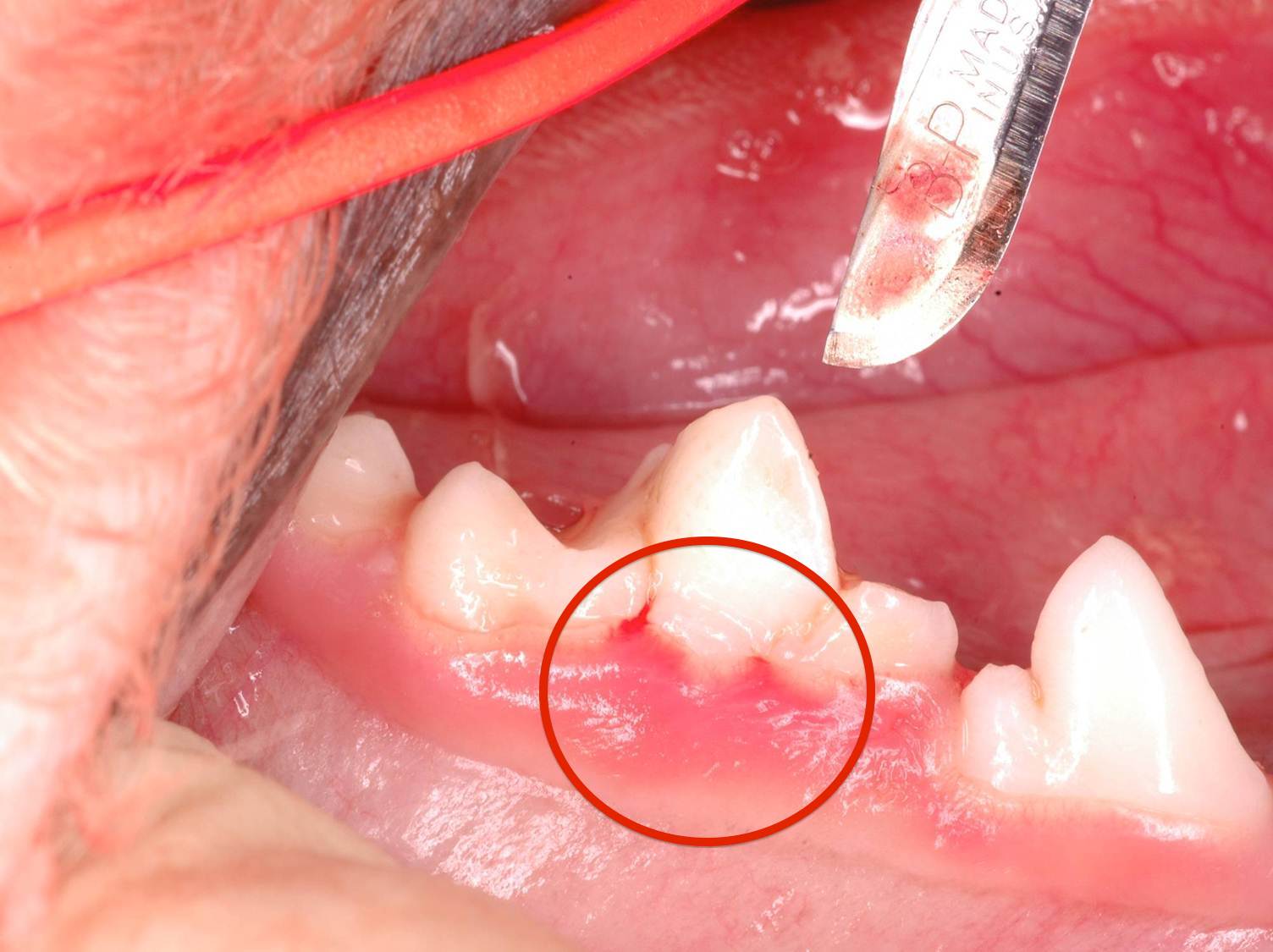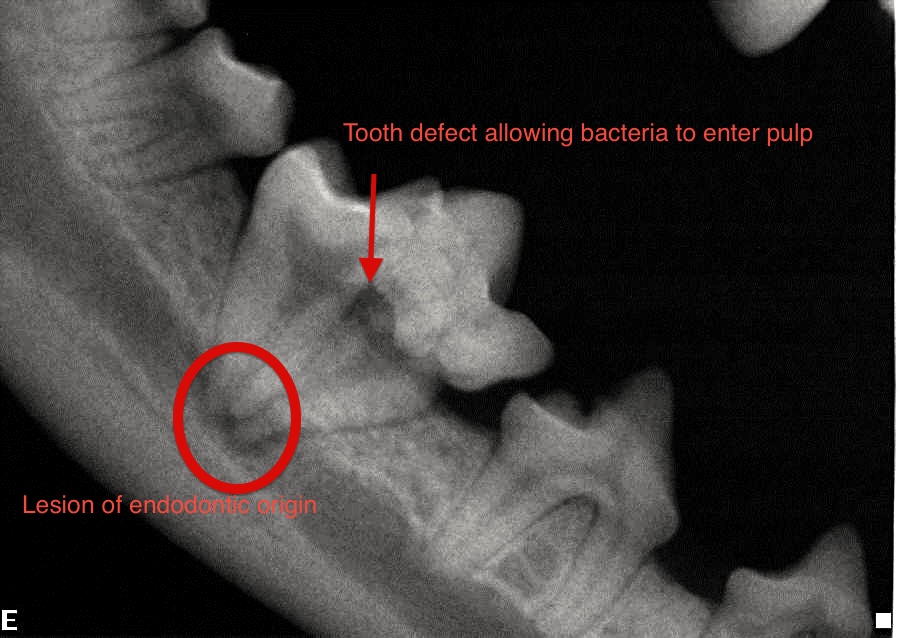17 Dec Dens Invaginatus in the dog…a periodontal and endodontic disease process
This is a very interesting case. Note the gingivitis between the two roots (circled area). Probing must be performed next to assess for any pockets, followed by dental radiography.
 Dental radiographs confirm a tooth that has roots that converge along with a pulp stone in the pulp canal. Finally, there is a LEO (lesion of endodontic origin) that indicates the tooth is dead.
Dental radiographs confirm a tooth that has roots that converge along with a pulp stone in the pulp canal. Finally, there is a LEO (lesion of endodontic origin) that indicates the tooth is dead.
This is called dens invaginatus. It has a tooth defect where the two roots converge. This allows bacteria to enter the pulp cavity which started the whole inflammatory/infectious process, killing the tooth. This tooth must be surgically removed. It also can occur on same tooth on the opposite jaw.

The circled area shows where the LEO (lesion of endodontic origin) occurs and the arrow shows where the tooth was defective allowing bacteria to enter and infect the pulp cavity.
Always take dental x-rays to get the whole picture underneath the gum line!
Barden Greenfield, DVM, Dipl. AVDC Your Pet Dentist


